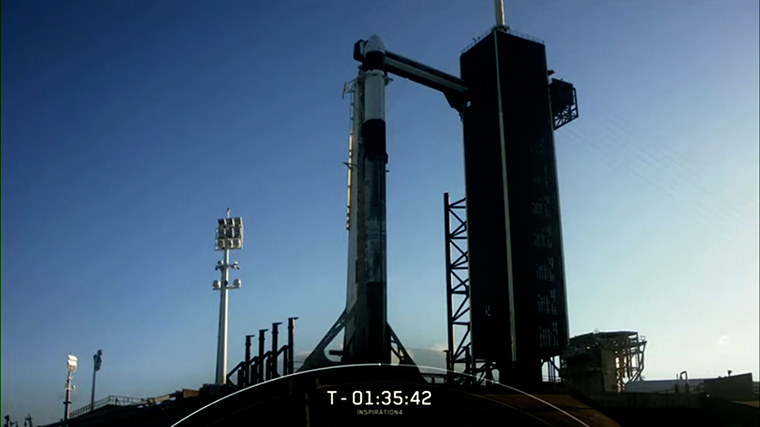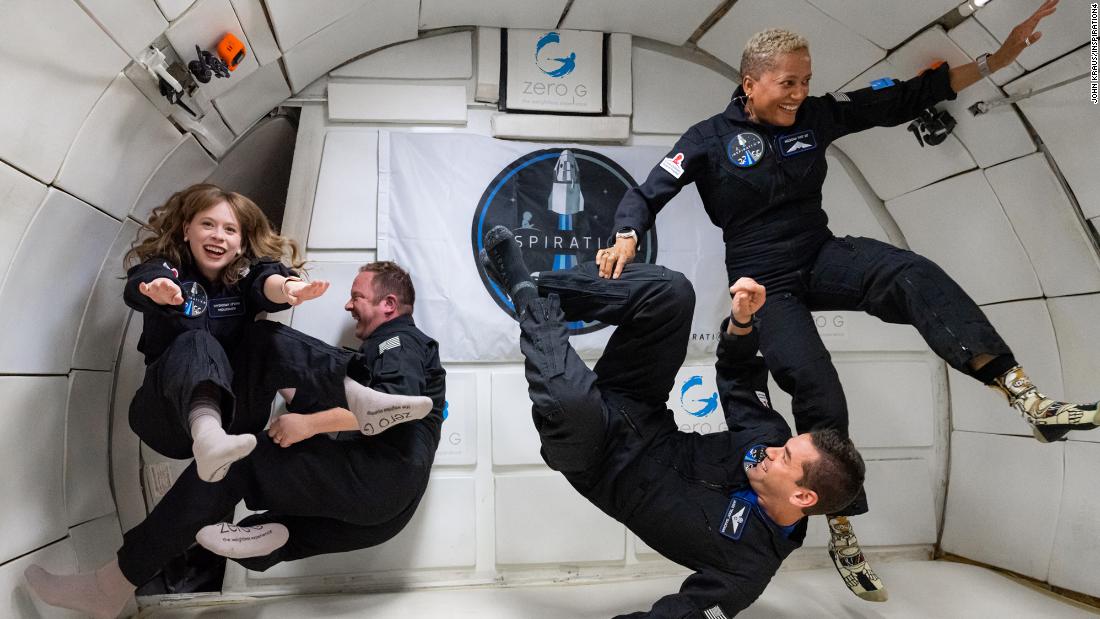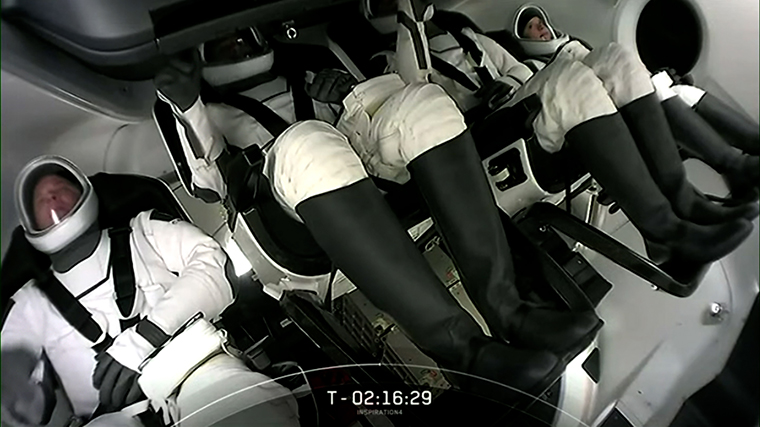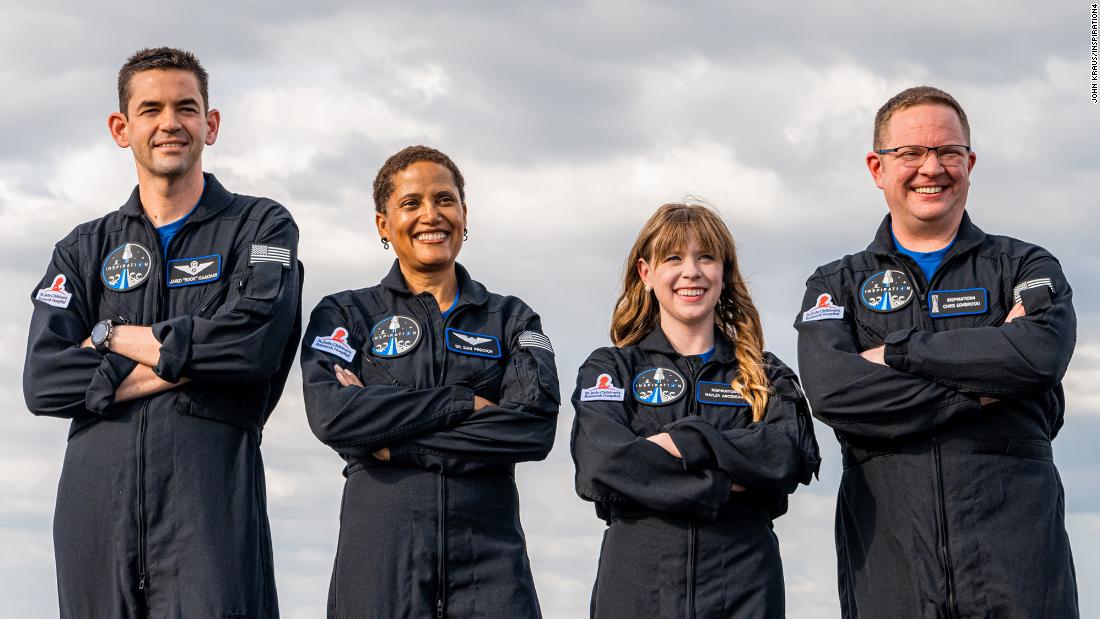The crew has a 40-song Spotify playlist downloaded and queued up to play during their journey. It includes jams from a variety of artists, from Jain to KoЯn to Smashmouth.
Each passenger picked 10 songs for the list. There's a few space-related songs on it, including:
- "Starships" by Nicki Minaj
- "Rocket Man" by Elton John
- "Space Girl" by Francis Forever
- "Counting Stars" by One Republic
Here's what Sembroski said about the curated playlist:
When my wife and I created the playlist, I wanted a mix that reflected the Pacific Northwest as well as music that captured all the expected unique experiences ahead. Macklemore’s “Can’t Hold Us” sets the tone for launch and then I went with songs that reminded me of flight and realizing what has been a lifelong dream for me. The idea of strutting out in my suit with “Dangerous” by Big Data playing or the saxophone solo from “Midnight City” by M83 as I look out at space from the cupola is already sending chills down my spine. Finally, I’m ready for everyone to see those “Blinding Lights” from Falcon 9 as we liftoff from Pad 39A, and I’ll probably not sleep until I feel gravity again.












